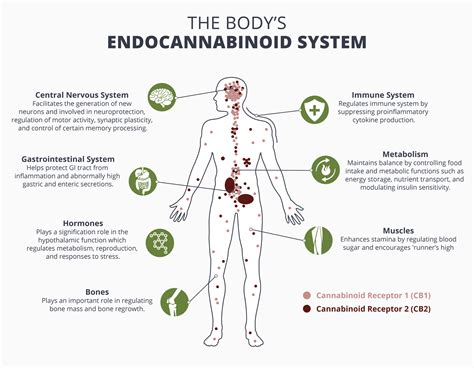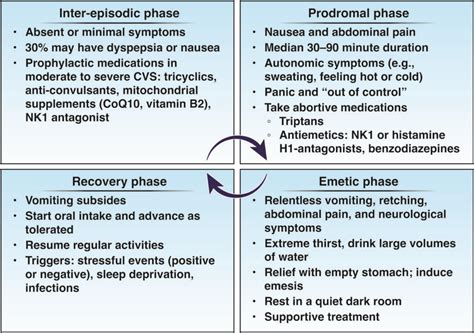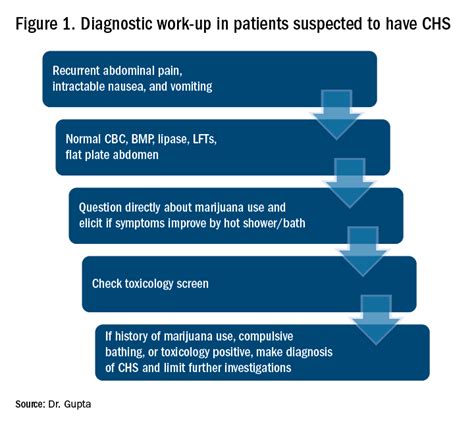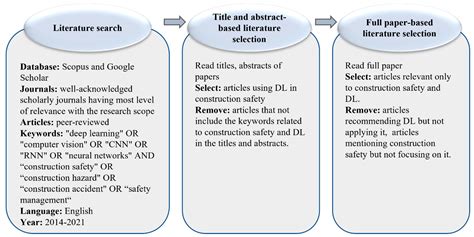Intro
Discover the 5 ways Cannabinoid Hyperemesis Syndrome occurs, including chronic cannabis use, dosing, and tolerance, leading to cyclic vomiting, nausea, and abdominal pain, affecting marijuana users and related to cannabinoid receptors and endocannabinoid system dysfunction.
Cannabinoid Hyperemesis Syndrome, or CHS, is a condition that affects some long-term users of cannabis. It is characterized by recurring episodes of severe vomiting, often accompanied by abdominal pain and weight loss. Despite its rarity, CHS has gained significant attention in recent years due to the increasing use of cannabis for both medicinal and recreational purposes. Understanding how CHS happens is crucial for both prevention and treatment. In this article, we will delve into the mechanisms behind CHS and explore five key ways in which it can occur.
The importance of discussing CHS lies in its potential to cause significant distress and health complications for those affected. Severe and repeated vomiting can lead to dehydration, electrolyte imbalances, and even kidney damage if not properly managed. Moreover, the cyclical nature of CHS, where periods of wellness are interspersed with episodes of severe illness, can have a profound impact on a person's quality of life. By understanding the underlying causes and mechanisms of CHS, healthcare providers and individuals can work together to develop effective strategies for prevention and treatment.
CHS is often misunderstood or misdiagnosed, partly due to its similarity in symptoms to other gastrointestinal disorders. However, its distinct pattern of severe vomiting, particularly after long-term cannabis use, sets it apart. The condition highlights the complex relationship between cannabis and the human body, particularly the endocannabinoid system, which plays a crucial role in regulating various physiological processes including nausea and vomiting. As cannabis use becomes more widespread, recognizing the signs and understanding the pathways through which CHS develops is essential for improving patient outcomes.
Introduction to Cannabinoid Hyperemesis Syndrome

Understanding the Endocannabinoid System

Role of CB1 Receptors
The CB1 receptors play a crucial role in the pathophysiology of CHS. Research suggests that prolonged activation of CB1 receptors by cannabinoids can lead to a downregulation or desensitization of these receptors. This downregulation may disrupt the normal regulation of nausea and vomiting, potentially leading to the hyperemetic phase of CHS. Furthermore, the distribution of CB1 receptors in the gut and the central nervous system provides a basis for understanding how cannabis use could influence gastrointestinal function and vomiting centers in the brain.Five Ways Cannabinoid Hyperemesis Syndrome Happens

-
Prolonged Cannabis Use: The most significant risk factor for developing CHS is long-term and frequent use of cannabis. Individuals who use cannabis daily or nearly daily are at a higher risk of developing the condition. The prolonged activation of CB1 receptors by cannabinoids is thought to contribute to the development of CHS.
-
Dysregulation of the Endocannabinoid System: The endocannabinoid system plays a critical role in regulating various physiological processes, including nausea and vomiting. Dysregulation of this system, potentially due to prolonged cannabis use, can lead to an abnormal response to cannabinoids, resulting in the severe vomiting characteristic of CHS.
-
Genetic Predisposition: Some individuals may be genetically predisposed to develop CHS. Variations in genes that encode for CB1 receptors or other components of the endocannabinoid system may affect how an individual responds to cannabis, potentially increasing the risk of developing CHS.
-
Method of Cannabis Consumption: The method of cannabis consumption may also play a role in the development of CHS. Smoking cannabis, for example, may lead to higher peak levels of cannabinoids in the blood compared to edible products, potentially increasing the risk of CHS.
-
Dosage and Potency: The dosage and potency of cannabis products are additional factors that may contribute to the development of CHS. Higher doses and more potent products may increase the risk of CHS by causing greater activation and subsequent downregulation of CB1 receptors.
Diagnosis and Treatment of CHS

Complications of Untreated CHS
Untreated CHS can lead to significant health complications, including dehydration, electrolyte imbalances, and kidney damage. The cyclical nature of the condition, with periods of severe illness followed by periods of wellness, can also have a profound impact on a person's quality of life, affecting their ability to work, maintain relationships, and engage in daily activities.Prevention and Future Directions

In conclusion, CHS is a complex condition that highlights the need for a comprehensive understanding of the effects of cannabis on the human body. By recognizing the factors that contribute to its development and understanding its mechanisms, we can work towards better prevention and treatment strategies. As cannabis use becomes more widespread, addressing the challenges posed by CHS will be essential for improving public health outcomes.
What is Cannabinoid Hyperemesis Syndrome?
+Cannabinoid Hyperemesis Syndrome (CHS) is a condition characterized by recurring episodes of severe vomiting, often accompanied by abdominal pain and weight loss, in long-term users of cannabis.
How is CHS diagnosed?
+Diagnosing CHS involves a comprehensive medical history, including patterns of cannabis use, and can be challenging due to its similarity to other gastrointestinal disorders.
What are the complications of untreated CHS?
+Untreated CHS can lead to dehydration, electrolyte imbalances, kidney damage, and have a significant impact on a person's quality of life.
We invite you to share your thoughts and experiences with CHS, and to consider the information provided as a starting point for further exploration and discussion. Whether you are a healthcare professional, a cannabis user, or simply someone interested in learning more about this complex condition, your input and engagement are invaluable. Let's work together to raise awareness and promote understanding of CHS, with the ultimate goal of improving the lives of those affected by this condition.
